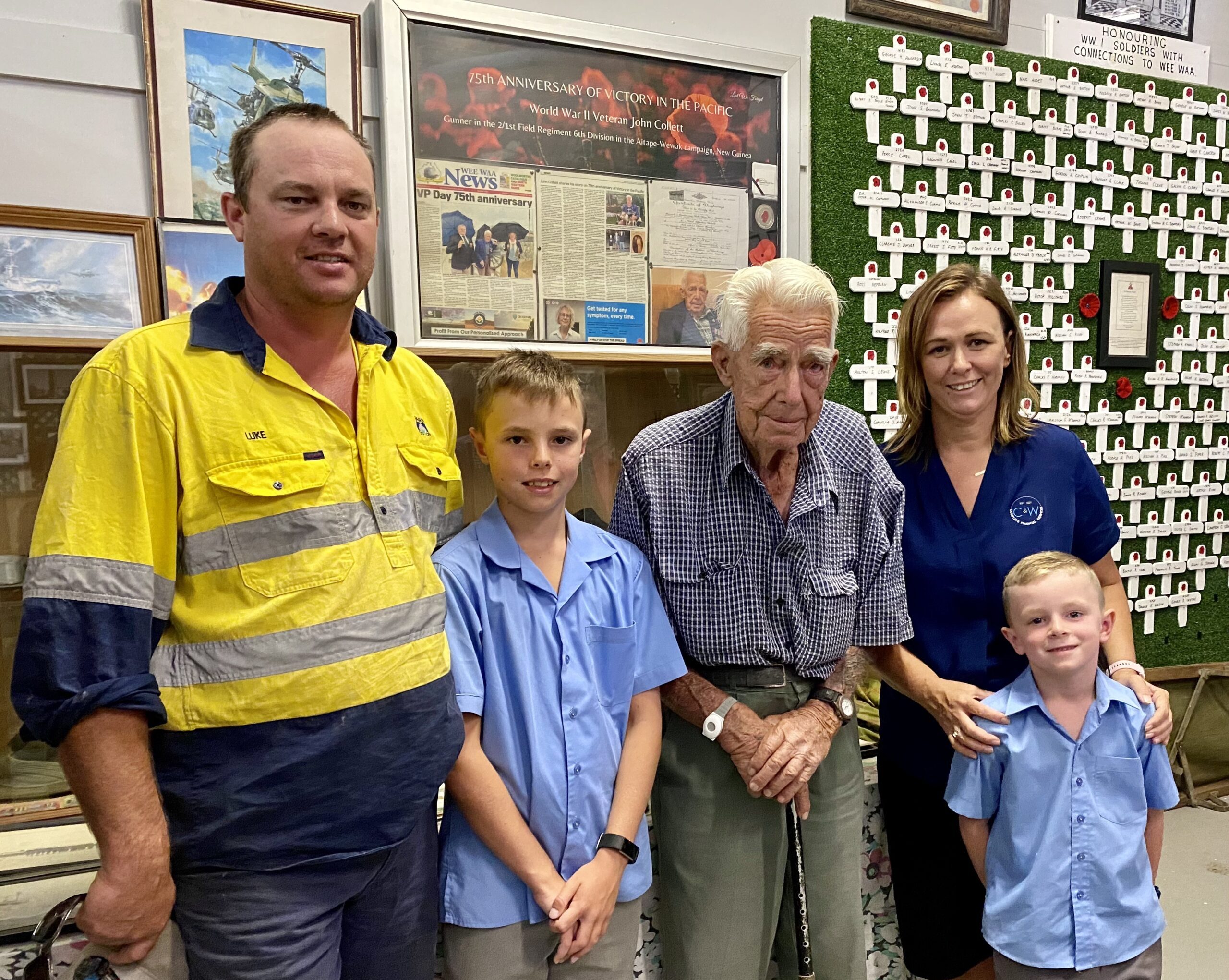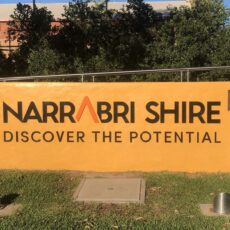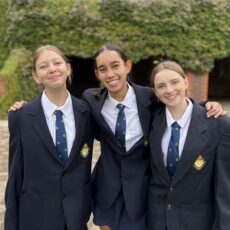Wee Waa’s only surviving Australian World War II veteran John Collett was honoured at the Namoi Echo Museum last week with a special plaque presentation.
Ninety-four-year-old John Collett doesn’t like fuss: he prefers to be called ‘John’ and isn’t a fan of pomp and ceremony, so organisers made sure they kept the presentation ‘short and sweet’.
“We’re very proud of ‘Fardy’ and we can’t wait until he’s 100,” said Nate Dewson, John Collett’s 10-year-old, great-grandson.
The presentation might have been low-key but what the plaque represents is incredibly significant and reflects the community’s desire to recognise John’s service as well as others from the district who served alongside him in World War II.
Last year, the federal government announced that every living World War II veteran would be given a medallion to mark the 75th anniversary of the end of the horrible and long conflict.
John’s Commemorative Medallion is one of the items that feature in the museum plaque along with his discharge papers, photos and the story John shared with The Courier last year to mark the 75th anniversary of Victory in the Pacific.
“These brave Australians served our nation in the far corners of the world, fighting in theatres of war from Europe to North Africa, the Mediterranean and the Middle East, to Asia and the Pacific, with the conflict also reaching Australian shores,” said Veterans’ Affairs Minister Darren Chester when he announced the medallion initiative.
“As a nation, we can never fully repay the debt we owe these amazing men and women but, to mark their service, the federal government is producing this Commemorative Medallion and Certificate of Commemoration for the remaining living Second World War veterans.” Mr Chester said about 12,000 medallions would be given to veterans around the country as “a gesture of appreciation from a grateful nation” to those “who fought to protect our way of life”.
The Department of Veterans’ Affairs said one side of the medallion features the Commonwealth Coat of Arms, wording of appreciation and identifies theatres of war that saw the significant involvement of Australian Armed Forces.
And the other side displays the poppy as the central symbol surrounded by the wording of ‘Australia Remembers’ and the beginning and end years of the Second World War.
John Collett served as a gunner in the 2/1st Field Regiment 6th Division, an Australian Army artillery regiment.
John was only 16 when he signed up to join the war effort. He was under age, but certainly wasn’t the only young man who managed to wrangle together a ‘signed’ letter to join his mates and fight for Australia’s future.
John was part of the Citizen Military Forces from June 30, 1943 to August 4, 1943, and he attended training camps near Albury NSW and Chidlow in Western Australia.
He joined the Australian Imperial Force on August 5, 1943 and trained for New Guinea in Queensland.
John served 403 days overseas in the Aitape-WeWak campaign, which has been described as a ‘hard, bloody and wearing’ conflict.
“It was a dirty war,” John told The Courier at the time of the 75th anniversary of Victory in the Pacific.
“It would be a different Australia today if the Japanese had won,” he said.
The Australian portion of the Aitape-Wewak campaign took place in northern New Guinea between November 1944 and August 1945.
When John received his Commemorative Medallions, he asked Wee Waa’s Roxanne Whitton to look after it for him but Mrs Whitton suggested it be displayed in the museum.
And with the help of John’s family and other generous community members, Mrs Whitton created a magnificent plaque to honour John’s service.
“I thought it belonged in the museum for his grandkids and great grandkids and for others in the district to see,” said Mrs Whitton.
“You could see how proud the boys (Nate and Toby Dewson) were today and as they get older they will learn more about the war and so will others, and understand what John did.”
Wee Waa RSL president Dennis Lowder and Namoi Echo Museum president Julie Dowleans OAM were also there for the special presentation. Julie said the museum was “honoured” to feature the display for locals and visitors to see.
“It’s great to have it all there for everyone to see,” said Mrs Whitton.
To order photos from this page click here



